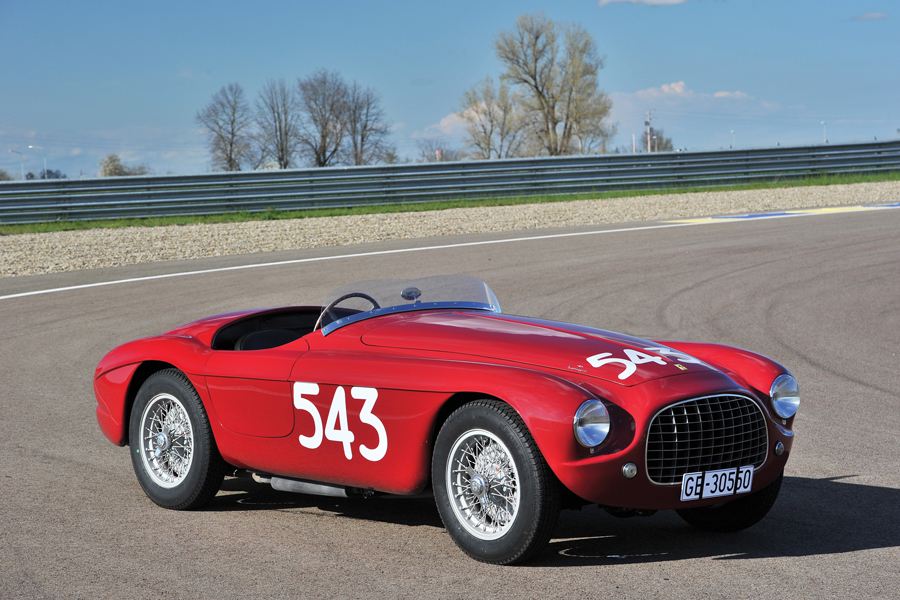No chassis number available
Ferraris have always been campaigned frequently and with ferocity by both the factory and wealthy privateers. The company’s reputation during its early days hinged on the success of its race cars. Whilst numerous road-going “Inter” models would be built afterwards by Ferrari, this 212 Barchetta would be the final Touring-bodied, race-ready “Export” model built by the factory and fitted with the potent Tipo 212 engine.
The new 212 would be destined for the race track. After great success at the Corsa al Monte Pellegrino Hill Climb, the owner entered his new car in one of the greatest motoring events in the world: the Targa Florio. The 10th overall and 5th in class finishes were incredibly impressive and a testament to the owner’s skill and the 212’s capability.
Over the next several years, 0158ED would be extensively raced, including another Targa Florio and the Mille Miglia.
After its retirement from racing, 0158ED passed through the garages of noted collectors Chris Cord, Art Connell, Stephen Griswold, Joe Pendergast, Juan Quintano, Carlos Monteverde and Bill Jacobs. It has been shown at top shows, participated in vintage rallies, and raced at historic races.
Chassis 0158ED is one of the finest examples of its kind. Whilst many early Ferraris were campaigned hard early in their lives, few emerged largely unscathed from the rigors of competition. It is important to note that 0158ED retains its original engine, gearbox and the stronger Tipo 340 rear axle that was fit by the factory in 1952. It has proven itself capable of winning awards at some of the most competitive concours events on the planet, and it holds its own on historic rallies.
For many Ferrari collectors, ownership of an early V12 barchetta is a longtime goal, as they represent the purest incarnation of Enzo Ferrari’s dream. They were built and bred for racing, and they not only excelled on the track but also helped increase Ferrari’s reputation as a dominant force. This example is surely one of the best of its kind, and it is ready for use at concours events, rallies and historic racing worldwide. As 0158ED is a highly eligible Ferrari V12 barchetta, it is guaranteed entry at the Le Mans Classic, Mille Miglia, Tour Auto, Goodwood and Monaco Historic Grand Prix.

